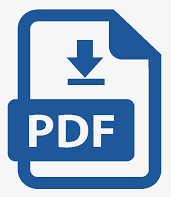Síndrome de deprivacion glucocorticoidea. A propósito de un caso
Palabras clave:
glucocorticoide, eje hipotálamo-hipófisis-suprarrenal, síndrome de deprivación glucocorticoide.Resumen
El síndrome de depravación glucocorticoidea es el cuadro clínico resultante de la suspensión de la administración exógena de esteroides, aplicados por tiempo prolongado, independientemente de la vía de administración. Provoca la frenación del eje hipotálamo-hipófisis-suprarrenal y por ende disminuye la producción y secreción de corticotropina. Paciente femenina de 54 años de edad, con esteroides como tratamiento prolongado. Al retirarlo comenzó con pérdida de peso y dificultad para caminar, además de hipotensión ortostática, sufrió caída brusca al piso con pérdida de conocimiento. Fue llevada al hospital y no se constató pulsos periféricos ni tensión arterial, que no resolvió totalmente con el uso enérgico de fluidos endovenosos. Se mantuvo sin regular parámetros normales, se reevaluó como un síndrome de depravación corticoidea y se le impuso tratamiento con prednisona, mejorando paulatinamente. Los síndromes asociados a la retirada de corticoides aparecen por el empleo de dosis altas, o retirada brusca de la corticoterapia prolongada. Al conjunto de síntomas y signos que aparecen cuando no se consigue tolerar la retirada de glucocorticoides, ante la ausencia de enfermedad subyacente para la cual fueron indicados estos medicamentos, y con un eje hipotálamo-hipófisis-suprarenal (HHS) no suprimido se le considera un síndrome de retirada de corticoides. A pesar de la gravedad, la frecuencia e importancia de este efecto secundario, en ocasiones no se repara en él, por lo que es imprescindible valorar los tratamientos indicados y reevaluar periódicamente los tratamientos crónicos indicados.
Descargas
Publicado
Cómo citar
Número
Sección
Licencia
La misma permite:
• Copiar y redistribuir el material publicado en cualquier medio o formato.
• Adaptar el contenido.
Esto se realizará bajo los siguientes términos:
• Atribuir los créditos de los autores e indicar si se realizaron cambios, en cuyo caso debe ser de forma razonable.
• Uso no comercial.
• Reconocer la revista donde se publica.
Se mantienen los derechos de autoría de cada artículo, sin restricciones.






